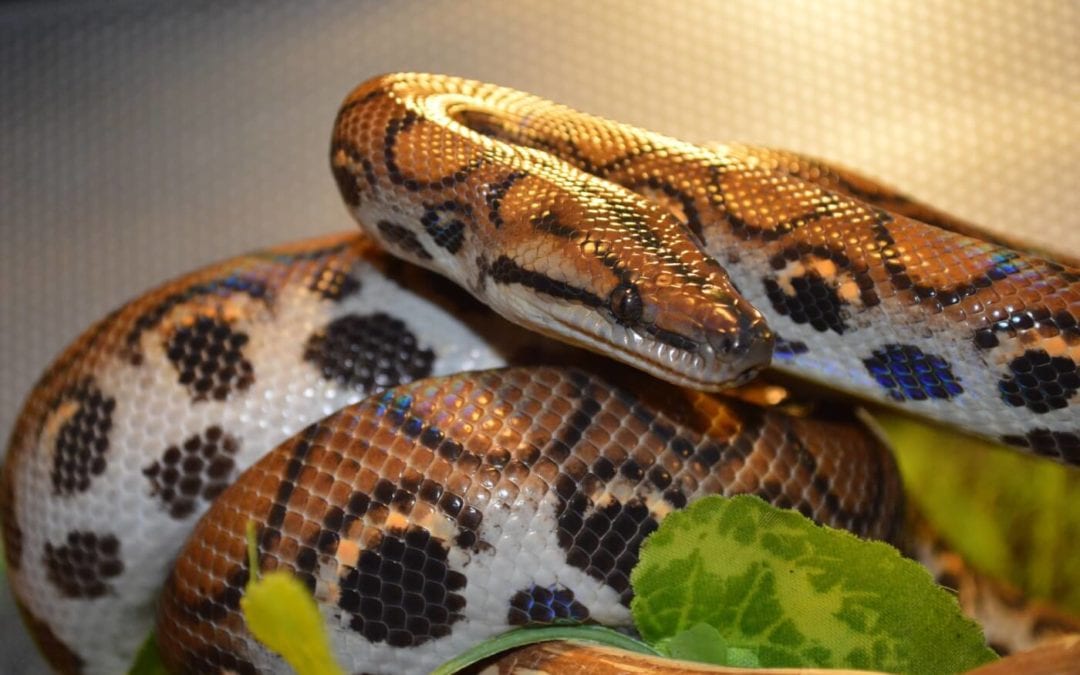
by Pigeon Patrol | Nov 5, 2020 | Pigeon Droppings, Pigeon Patrol's Services, Pigeon Predators, Pigeon Spikes
So you want to learn more about who and what are predators of the pigeon,
Well you’ve come to the right place. Today we will be talking about just that and how these pigeons try to avoid them.
Pigeon Predators
Some common predators of feral pigeons in North America are Foxes, snakes, red-tailed hawks, and owls. The birds that prey on pigeons in North America can range in size from American kestrels to golden eagles and can even include gulls, crows, and ravens.
Foxes are small to medium-sized, omnivorous mammals belonging to several genera of the family Canidae. Foxes have a flattened skull, upright triangular ears, a pointed, slightly upturned snout, and a long bushy tail. Twelve species belong to the monophyletic “true foxes” group of genus Vulpes. These animals can be seen preying on pigeons early in the morning
Snakes are no stranger to pigeons. Snakes are elongated, legless, carnivorous reptiles of the suborder Serpents. Like all other squamates, snakes are ectothermic, amniote vertebrates covered in overlapping scales. Snakes can easily swallow a pigeon in no time. There’s a couple of videos of snakes devouring pigeons.

Another big predator or the pigeon is the Seagull. Gulls, or colloquially seagulls, are seabirds of the family Laridae in the suborder Lari. They are most closely related to the terns and only distantly related to auks, skimmers and even more distantly to waders. Seagulls in Rome are “returning” to their natural status as predators, hunting down rats, pigeons, and other smaller birds as the lack of humans on the streets mean no food scraps are to be found

Another predator of pigeons are the golden eagle. The golden eagle is one of the best-known birds of prey in the Northern Hemisphere. It is the most widely distributed species of eagle. Like all eagles, it belongs to the family Accipitridae. These birds are dark brown, with lighter golden-brown plumage on their napes. The healthy adult golden eagle, due to its impressive size and hunting prowess, has no natural predators. Eggs, chicks, immature eagles, and injured birds are susceptible to a range of predators, such as other birds of prey, including other kinds of eagles and hawks, bears, wolves and cougars.

And the biggest predator of pigeons? Man is by far the greatest predator of pigeons.
How The Pigeon Avoid Predators
In most birds, flight is the most important means of escape from predators. Impaired flight abilities due to increased wing loading may increase vulnerability to predation. To compensate for an increase in wing loading, birds are able to independently decrease body mass (BM) or increase pectoral muscle mass (PMM). Comparing nearshore and farshore foraging shorebird species, we develop a theory as to which of these responses should be the most appropriate. We hypothesize that nearshore foragers should respond to increased predation by increasing their PMM in order to promote speed-based escape. Instead, farshore foragers should decrease BM in order to improve agility for maneuvering escape. Experiments on 2 shorebird species are consistent with these predictions, but on the basis of the theoretical framework for evaluating effect size and biological significance developed here, more experiments are clearly needed. Source
They can startle the predator, stand their ground, crouch and stay put, or fly off (Caro 2005). For most birds, flight is the predominant escape mode. A reduction of speed or maneuverability is likely to increase the chance of being depredated once airborne
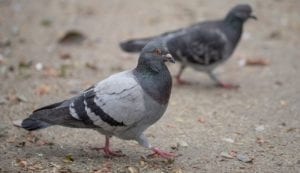
About Pigeon Patrol:
Pigeon Patrol Products & Services is the leading manufacturer and distributor of bird deterrent (control) products in Canada. Pigeon Patrol products have solved pest bird problems in industrial, commercial, and residential settings since 2000, by using safe and humane bird deterrents with only bird and animal friendly solutions. At Pigeon Patrol, we manufacture and offer a variety of bird deterrents, ranging from Ultra-flex Bird Spikes with UV protection, Bird Netting, 4-S Gel and the best Ultrasonic and audible sound devices on the market today.
Contact us at 1- 877– 4– NO-BIRD, (604) 585-9279 or visit our website at www.pigeonpatrol.ca
Bird Gone, Pigeon Gone, Seagull Gone, Pigeon problems, 1-877-4NO-BIRD, 4-S Gel, Bird Control, Pigeon Control, bird repellent,, sonic bird repellent, stainless steel , bird spikes Vancouver, Ultra Sonic Bird Control, Bird Netting, Canada bird deterrents, Pigeon Pests, B Gone Pigeon, Pigeon Patrol, pest controller, pest control operator, pest control technician, Pigeon Control Products, humane pigeon, pigeon deterrents, pigeon traps, Pigeon repellents, Sound & Laser Deterrents, wildlife control, raccoon, skunk, squirrel deterrent, De-Fence Spikes, Dragons Den, Canada bird spikes, Canada pigeon, pigeon control, pigeon patrol, pigeon. Kill pigeons, crow, starling, Pigeon Habitat, Pigeon identifications,
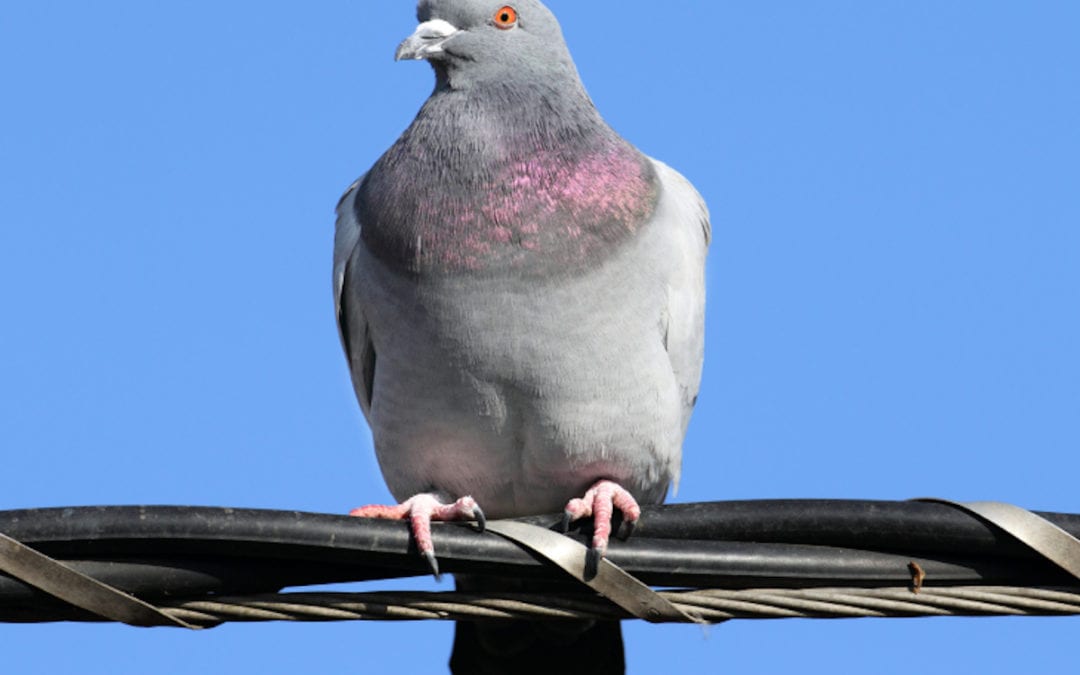
by Pigeon Patrol | Nov 4, 2020 | Animal Deterrent Products, Bird Deterrent Products, Bird Netting, Bird Spikes, Pigeon Control, Pigeon Droppings, Pigeon Patrol's Services
Do You Wanna Know How To Reduce The Numbers In Pigeons Roaming Around?
Keep on reading!
The need to reduce numbers in feral pigeon populations in urban areas has been the subject of intense debate for decades with town and city councils making little impact on the problem due to lack of investment and, in many cases, a reluctance to think laterally. Although the feral pigeon has been a common feature of urban life for the last 100 years there is no doubt that urban flocks are now growing faster than their numbers can be controlled. The reason for this unprecedented rise in feral pigeon numbers is due, almost exclusively, to the availability of food and the methods used to control the birds. Other factors such as the availability of good roosting and breeding facilities also play their part.
The feral pigeon is completely at home in urban environments, exploiting humans for food and using buildings for the purposes of roosting and breeding. This is because the feral pigeon is a descendent of the rock dove, a cliff-dwelling bird that was commonly found feeding and breeding along rocky coastlines prior to its mass exodus inland to make its home alongside man.

Pigeons (Rock Doves) in
their Natural Habitat
The reason that the rock dove chose to desert its natural habitat is the obvious availability of food combined with the optimum breeding and roosting potential offered by buildings, which resemble cliff faces. In its natural habitat the only real predator of the rock dove was the peregrine falcon, an extremely efficient predator that preyed on both pigeons and gull chicks.
In these natural environments flock size was restricted and maintained at levels dictated by the availability of natural food sources and the extent of predation in the area concerned. In urban environments, however, the picture is very different with man being the sole predator of the feral pigeon and food sources guaranteed.

Peregrine Falcon
Today the feral pigeon can be seen in virtually every area of the globe other than the two polar icecaps, exploiting man for food and his buildings for the purposes of roosting and breeding. Man has attempted to control the feral pigeon by using a variety of lethal controls, including poisons, narcotics, cage traps and shooting, and yet the pigeon has shrugged off all these attempts at population control and continued to live and breed in close association with man undeterred. Lethal controls have been complemented by an arsenal of deterrents, provided in an effort to deny or restrict roosting and perching opportunities (thereby reducing guano-related problems). Anti-roosting systems such as anti-roosting spikes have proved extremely effective at displacing pigeons from areas that pigeons roost and nest; but may not be a total solution as pigeons may simply move to other areas nearby.

Rifle Used for Pigeon Culling
So what other options are available to control and contain the problem? The answer to the question really lies in the source of the problem: available food and the means by which we currently control the birds. The use of lethal control as a means of controlling and reducing pigeon populations has been found to have no effect in terms of reducing pigeon flock size. Scientific research has even found that lethal controls can have the opposite effect, resulting in an increased flock size as a result of rejuvenation within the flock. Although we now have the science which proves that all attempts to reduce flock size by lethal means will be a wasted effort, the use of lethal control on pigeon populations is still extensive in the UK and many other countries worldwide. Why then are lethal controls used at all? Culling has been relied upon for decades by the pest control industry as a highly lucrative and revenue-rich service. If it were withdrawn as a control option many contractors would simply go out of business.

Pigeon Loft used for
Breeding Control
The only proven method of reducing pigeon flock size as part of an area-wide control system is to use a method pioneered by PiCAS International involving the use of artificial breeding facilities. This stand-alone method of control has been scientifically* proven to reduce pigeon flock size and is currently being employed throughout mainland Europe by councils and commercial organizations alike. The principle of a scheme using artificial breeding facilities is to provide a pigeon loft or dovecote in which feral pigeons can be encouraged to roost and breed and from which their eggs can be removed as laid and replaced with dummy eggs. This method of breeding control has been found to be extremely effective in reducing flock size and maintaining that reduction indefinitely
Whether a dovecote or pigeon loft is used the principle is the same – pigeons are encouraged to take up residence in the facility provided and as soon as breeding commences their eggs are removed as laid and substituted with dummy eggs. The hen bird will then continue to sit on the eggs for a period of between 18 and 25 days before realizing that the eggs will not hatch, at which time she will then abandon them. If eggs are removed without substituting with dummy eggs the hen bird will re-lay immediately and continue to re-lay each time her eggs are removed.
This may result in long-term health-related problems for the hen bird (such as a severe calcium deficiency) and as the goal is to maintain a small healthy flock of pigeons this is clearly not desirable.
The two types of artificial breeding facility available for use as a breeding control are very different in respect of both design and siting criteria, with a pigeon ‘loft’ normally provided on or possibly even within a building and a dovecote provided in an open space and at ground level. A pigeon loft would normally be provided by a property owner on a specific building or site in an effort to control breeding flocks of feral pigeons within that localized area. A dovecote would normally be provided in a green open space, such as a public park, where the scope of the facility would be the control of large feeding flocks of feral pigeons. In the case of a dovecote-based system a designated public feeding area would normally be provided adjacent to the dovecote in which the general public would be encouraged to feed pigeons, as the food would act to attract the birds to the dovecote facility.
The additional benefit of a designated feeding area, certainly where deliberate and persistent feeding of pigeons is identified as being the root cause of the problem, is that the facility will draw feeders away from their normal feeding areas in town and city centers and relocate them to green areas where pigeons can be better tolerated. Many councils will use the ‘carrot and stick’ approach when offering a system of this nature, providing feeders with legitimized areas in which to feed pigeons but large fines if they continue to feed outside the designated areas.
The main source of all pigeon-related problems in urban areas is deliberate and persistent over-feeding of pigeons by a small number of people who normally feed large quantities of high quality food 7 days a week. To a lesser extent the methods most commonly used to control pigeons (lethal controls) exacerbate and further entrench problems caused by overfeeding. The combination of overfeeding and the rejuvenation of pigeon flocks through the use of lethal controls has resulted in deeply entrenched problems in virtually every city in the Western world.
In some countries the feral pigeon has a religious significance and this fact has also acted to further embed the problem. Muslim, Hindu and Sikh cultures feed pigeons for religious reasons and although the feeding of pigeons for these reasons still continues in many UK towns and cities today, there is a view that the feeding of pigeons is the preserve of the older generation with younger generations taking little interest in the bird. In multi-racial cities like Leicester, for example, where the council embraces the concept of culling and where ethnic minority groups offer huge quantities of food to feral pigeon populations on a daily basis, feral pigeon flocks have grown to unsustainable proportions, creating deeply entrenched problems for property owners.

The problem has become so entrenched that several years ago PICAS International was called in to humanely remove nearly 2000 breeding pigeons and their young from 7 residential roof-spaces in council-owned properties in the city. This indicates the scale of the problem and confirms that citywide overfeeding of feral pigeons, combined with the over-use of culling, will only ever result in upwardly spiraling pigeon flock size.
For any urban pigeon control system to be effective there must not only be area-wide controls provided in the form of pigeon lofts and dovecotes with designated feeding areas, but also an acceptance by property owners that they must play their part. The only body that can be a catalyst for area-wide controls is a council, but if property owners fail to control pigeons on their own properties and allow entrenched roosting and breeding problems to occur or to continue any programme provided by the council will inevitably be compromised. Breeding controls can be astonishingly effective, but if property owners fail to exclude pigeons from their properties those same birds will continue to breed unchecked, further compounding the problem throughout the area. If breeding controls are provided in the form of lofts and dovecotes, however, and if both the local authority and property owners pull in the same direction, a vast majority of pigeons that are excluded during proofing programmes will end up in loft or dovecote facilities where their breeding can be controlled.
The average property owner can provide an extremely effective pigeon control system by installing deterrents in areas where roosting, breeding or perching exists and, if the problem justifies it, by providing an artificial breeding facility in the form of a pigeon loft. The combination of these two controls on one building or site will not only reduce the incidence of soiling in sensitive areas, but will also reduce flock size year on year, resulting in a small manageable flock of pigeons. This must be the goal of every property owner based on the fact that it is simply impossible to eradicate the feral pigeon completely. Although deterrents cannot be considered to be cheap, if the correct choice is made and if the product is sourced and installed by the property owner concerned at least 20-30 years’ protection should be afforded. The correct choice of deterrents is key, with some anti-perching products such as repellent gel only providing between 3 and 12 months’ protection and bird exclusion products like nylon bird netting only offering 5-10 years’ protection. The anti-roosting spike will, however, offer the property owner up to 30 years’ protection without the need to maintain or replace the product, making it an economical and aesthetically pleasing choice.
When a council chooses to provide an area-wide control system for feral pigeons (and very few UK-based councils do provide area-wide systems) expert guidance is critically important. Control systems that are designed to resolve entrenched pigeon-related problems are complex, particularly if the root cause of the problem is persistent and deliberate feeding by the general public. Many UK-based councils have attempted to address the problem by using hard-hitting and aggressive campaigns threatening pigeon feeders with large fines or imprisonment and often undertaking deeply unpopular culling operations at the same time. In each and every case these campaigns have failed due to the fact that the council concerned has failed to understand the underlying reason why people feed pigeons. The ‘problem’ cannot be dealt with as a littering offense or an anti-social act; it must be dealt with by education and persuasion rather than by threats and legislation.
If public feeding is identified to be the cause of the problem a system of controls must be provided that take the impact of persistent feeding into consideration at the same time as identifying large-scale pigeon roosts and closing them down. The principle of an effective area-wide control system using dovecote-based artificial breeding facilities is to provide the general public with an area specifically set aside for the purpose of pigeon feeding and to confirm that feeding is allowed in this area, but nowhere else.
A high-quality public education campaign must be launched confirming what the council is trying to achieve and why. Once a dovecote and designated feeding area facility has been provided in a central and accessible area the task of encouraging the feral pigeon population to feed on the site and take up residence in the dovecote is the next step.
Where pigeon-related problems exist as a result of public feeding the public education campaign will guide feeders to use the dovecote site for this purpose and as a result pigeons will follow, thereby resolving problems for property owners. Where breeding or roosting-related problems exist, however, it will be necessary to exclude pigeons from these areas with physical deterrents or to provide a loft-based artificial breeding facility or a combination of both.
One of the main reasons that area-wide control systems break down is the failure of councils to identify large-scale overnight roosts and force property owners to close them down and exclude pigeons. Councils have the power to force any property owner to undertake works to exclude pigeons from their property or, if the property owner refuses, to undertake those works itself and then bill the property owner. Even in light of these far-ranging powers, however, councils are deeply reluctant to take this action even though it may make render the area-wide control system a failure.
Of course, it is not always advisable or desirable to exclude pigeons from an existing roosting or breeding site, particularly if there is no area-wide control system in place to provide alternative accommodation. This does not stop property owners and companies like Network Rail excluding tens of thousands of pigeons from buildings and roosting sites under railway bridges every year. These excluded birds simply become someone else’s problem and the cycle begins again. This is why it is so important to provide a system of sustainable controls, such as the use of artificial breeding facilities, that will continue to control both breeding and (in the case of dovecote-based systems) feeding indefinitely, with little or no cost involved other than the initial outlay. These systems are popular with the general public and property owners alike as they humanely relocate pigeons to areas where they can be tolerated, accommodated and controlled without the need to resort to unpopular, invasive and unsustainable controls such as culling.
About Pigeon Patrol:
Pigeon Patrol Products & Services is the leading manufacturer and distributor of bird deterrent (control) products in Canada. Pigeon Patrol products have solved pest bird problems in industrial, commercial, and residential settings since 2000, by using safe and humane bird deterrents with only bird and animal friendly solutions. At Pigeon Patrol, we manufacture and offer a variety of bird deterrents, ranging from Ultra-flex Bird Spikes with UV protection, Bird Netting, 4-S Gel and the best Ultrasonic and audible sound devices on the market today.
Contact us at 1- 877– 4– NO-BIRD, (604) 585-9279 or visit our website at www.pigeonpatrol.ca
Bird Gone, Pigeon Gone, Seagull Gone, Pigeon problems, 1-877-4NO-BIRD, 4-S Gel, Bird Control, Pigeon Control, bird repellent,, sonic bird repellent, stainless steel , bird spikes Vancouver, Ultra Sonic Bird Control, Bird Netting, Canada bird deterrents, Pigeon Pests, B Gone Pigeon, Pigeon Patrol, pest controller, pest control operator, pest control technician, Pigeon Control Products, humane pigeon, pigeon deterrents, pigeon traps, Pigeon repellents, Sound & Laser Deterrents, wildlife control, raccoon, skunk, squirrel deterrent, De-Fence Spikes, Dragons Den, Canada bird spikes, Canada pigeon, pigeon control, pigeon patrol, pigeon. Kill pigeons, crow, starling, Pigeon Habitat, Pigeon identifications, reducing pigeons
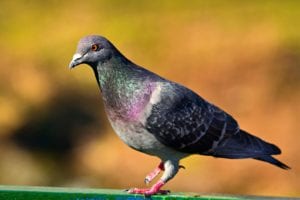
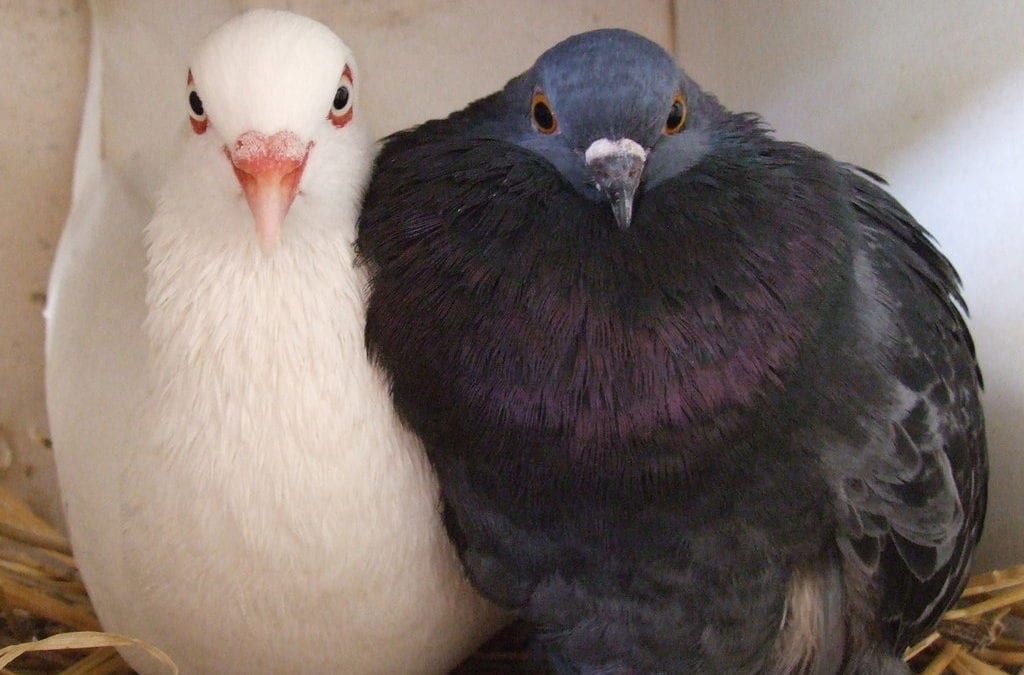
by Pigeon Patrol | Nov 4, 2020 | Columbidae, Doves, Pigeon Control, Pigeons, Pigeons in the News
Looking to learn the differences between pigeons and doves?
Well, look no further, because you’re in the right place!
In this blog you’ll learn:
- Size and Appearance of Doves and Pigeons
- Are Doves and Pigeons Considered Pests?
- Cultural Significance of Doves and Pigeons
- Pest Control for Pigeons
- FAQ
What Are Their Differences In Size And Appearance?
Doves and pigeons are both members of the family of birds known as Columbidae. They are similar in many respects, but there are still some noticeable differences between them.
Doves
Doves are smaller than pigeons. Some weigh as little as 22 grams (less than an ounce). The most noticeable aspect about them is their pointed tail.
The most plentiful breed of doves in America is the mourning dove or rain dove. They typically range in size around 12-inches in length and weigh between 4 and 6 ounces.
The head is rounded with a distinctive crescent-shaped area of dark feathers under each eye. They are a light grayish-brown color with lighter, pink coloration underneath, and a dark speckling on their wings.
They are strong fliers, capable of reaching speeds up to 55 mph. At takeoff and landing their wings make an unusual whistling sound, a phenomena known as sonation, the deliberate production of sounds without using the throat or vocal cords.
The adult males have some bright purple-pink patches on the sides of their neck, along with light pink coloring reaching the breast. On the crown of their head is distinctly bluish-grey in color.
The female, by contrast, is a bit smaller than the males and instead of the male’s bright plumage have more brown coloration overall.
Doves eat seeds almost exclusively and prefer open or semi-open habitats such as prairies, grasslands, and lightly wooded areas while avoiding swamps and thick forests.
They are generally monogamous and both parents participate in feeding and caring for their young. After a noisy courtship flight, the male will lead the female to several potential nesting sites in various trees until she chooses one, then helps her build the nest.
She normally lays two eggs and one or the other of them always remains with the eggs, then later with the young until they’re mature.
Doves will put on a broken-wing display in order to distract a predator who is approaching the nest and their young. They do this by fluttering about on the ground as if they’re helpless or injured, then flying away when the predator gets close.
Pigeons
Pigeons are larger than doves and have a rounded tail instead of a pointed one. They are usually 13-inches or more in length and can weigh as much as 4kg (8.8 pounds).
The most common variety of pigeons are the rock pigeons. They’re usually light gray on their upper body and belly, with a darker gray on their head and breast.
They can be identified by the distinctive iridescent purple and green coloration on their neck and breast. They’re not native to the United States. They were introduced into America from Europe in the 1600’s. This means they have no natural predators to limit their population.
Homing pigeons were selectively bred from rock pigeons to take advantage of their innate ability to find their way home over incredibly long distances. This ability is believed to be a function of magnetoreception, the ability to use the earth’s magnetic field to navigate.
Their long-distance flight speed (over distances of 400 miles) has been clocked at 50 mph sustained speed, but they can go as high as 90 mph in racing contests.
Rock pigeons have been domesticated for thousands of years, as food and as message carriers. The males are usually larger than the females and stand taller.
They have larger beaks, with eye cores (fleshy growth around the eyes), round heads and thick napes. Females, however, are shorter with smaller beaks and ceres. They have flatter heads and larger breasts than the males.
Courtship rituals are noisy. The male will puff out his chest, strut around the female bobbing his head and cooing insistently.
He will often turn completely around during his display. Once the female accepts him, they mate for life and will often re-enact their courtship over and over throughout their lives.
Pigeons are quite content to nest on building ledges, rooftops, girders, and the rafters of warehouses. They eat seeds almost exclusively and will take turns foraging when they have young in their nest.
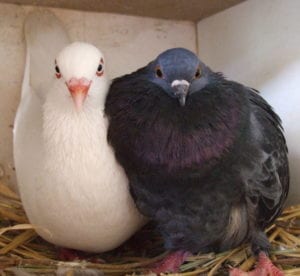
Source
Are Doves and Pigeons Considered Pests?
Yes & No.
Doves aren’t considered pests. They generally don’t nest in and around human habitations, although they have been known to do so occasionally.
For the most part, they are considered a game bird and sportsmen enjoy a good dove hunt as much as hunting for turkeys, pheasants, or any other wild game.
When it comes to pigeons, however, the situation is a bit different. Factories often have quite extensive problems with them nesting in the rafters of warehouses or the upper stories of a power plant.
It doesn’t take long before their population expands to the point where they become a genuine nuisance.
Their droppings discolor machinery, stairways, railings, pallets, crates, and anything else (or anyone else) unfortunate enough to be under when they “let go.” It leaves a pungent, unpleasant odor and the biochemicals in it can accelerate the deterioration of whatever it touches.
What Is The Cultural Significance of Doves and Pigeons?
Doves
For most of human history, doves have been considered symbols of peace. The iconic symbol of a dove carrying an olive branch in its mouth had its beginnings in the early chapters of the Book of Genesis in the Bible.
And he waited yet another seven days, and again he sent the dove out from the ark. Then the dove came to him in the evening, and behold, a freshly plucked olive leaf was in her mouth; and Noah knew that the waters had receded from the earth. [Genesis 8:10-11, NKJV]After the rain stopped, Noah sent out a dove but it came back. The next time he sent it out it came back carrying an olive branch in its beak, a symbol that God’s wrath – and the waters of the Flood – was abating, and peace was returning to the world.
The New Testament also has a dove that symbolizes peace and love. When Jesus went down to the Jordan river to be baptized by John, He came up out of the water and the Holy Spirit, in the shape of a dove, came down upon Him.
When He had been baptized, Jesus came up immediately from the water; and behold, the heavens were opened to Him, and He saw the Spirit of God descending like a dove and alighting upon Him. And suddenly a voice came from heaven, saying, “This is My beloved Son, in whom I am well pleased.” [Matthew 3:16-17, NKJV]That powerful imagery from these two events has stayed with us ever since and has been used in peace movements all over the world even by those who reject the Biblical story of the Flood and Jesus.
There is even a book entitled Doves and Diplomats that is dedicated to the subject.
Pigeons
Despite their many similarities, pigeons occupy a somewhat lower position in the, ahem, pecking order, than doves do. There are Mesopotamian cuneiform tablets that are over 5000 years old showing pigeons being domesticated and raised for food.
They have also been used in commerce, and by the military, to carry important messages back and forth. Early references to pigeons being used to carry messages date back to 2500 B.C.
The Roman Empire used pigeons for this purpose, as did the ancient Greeks. Whereas doves are seen more like symbols, pigeons are more often viewed as work animals or food.
Pigeons have often been housed in structures referred to as dovecotes, essentially a hen house for pigeons. These birdhouses ranged from crude, thatch-covered huts to clay pot-shaped buildings to ornate structures designed to hold thousands of birds.
Pigeons were domesticated not only for food and for its ability to “return home” but also for sport.
Pigeon racing has a long and storied history, as do various forms of falconry and pigeon killing. With the advent of guns, sports shooting of pigeons quickly gained popularity.
Huge numbers of pigeons would be captured, then released all at once in front of a crowd of hunters who shot them at point-blank range.
“Clay pigeons” were derived from this practice when the availability of live pigeons dwindled through over-hunting.
How Can You Control Pigeons?
Doves don’t provide nearly the nuisance level of activity that their larger pigeon cousins do, so this section will focus mainly on pigeons.
As stated earlier, they have a regrettable habit of infesting factories and large buildings then pooping all over them, producing an unsightly mess and a health hazard.
One of the ways PCO’s (Pest Control Operators) defend against pigeons is with the use of anti-bird spikes. Many of them are actually called pigeon control spikes, which tells you how often they’re the culprit in these situations.
These spikes can be laid out on girders and ledges where pigeons like to nest. They can’t land without getting stabbed or hurting their feet so they eventually give up and fly away somewhere else.
A second way PCO’s control pigeon populations is through live trapping. Bird traps are set out with bait corn in them and the doors wired open so they won’t close.
After the pigeons get used the traps and get used to going in and out without harm, then the PCO unwires the doors and lets the traps capture the pigeons. Once the trap is full the PCO collects the birds and transports them away for release back into the wild.
The problem here is obvious; pigeons, with their natural homing ability, quickly return to their “home” in the factory or warehouse and you’re right back to square one.

The only permanent solution is to kill them with poisoned bait. The PCO does essentially the same thing as before with the live trapping, only this time without a trap.
Unpoisoned bait is put out for a week or so to acclimate the birds to being feed at a certain place. Once they’re feeding freely on the safe bait, the poisoned bait is substituted and the pigeons will go on eating it as usual. Very quickly they’ll all be dead.
Frequently Asked Questions
Is it safe to ship doves across the country for a wedding release?
Yes. Dove release companies do this all the time without any danger to the birds. Once released, the birds immediately fly back home again.
What should I do if I find an injured dove or pigeon?
As with any wild animal that is injured, be careful not to let them bite or scratch you. They’re in scared and in pain.
They won’t understand that you’re trying to help them and will fight to escape. Contact a local veterinarian for help on capturing the bird.
Is it okay to feed pigeons and doves?
Yes and no. It’s not illegal to feed them, but you’ll definitely be encouraging them to gather for a daily feeding, which increases the amount of bird poop in the area.
They can also get quite noisy when they’re squabbling over food, which might upset your neighbors. It might not be against the law to feed them, but it might be against good manners.
What should I feed pigeons and doves?
Birdseed for doves and pigeons is available in 6-25 pound bags. Rather than putting it in a bird feeder as people do with smaller birds, spread it out across your backyard.
If you feed them at the same time every day it won’t be long before they’ll be out there waiting for you when it’s time.
About Pigeon Patrol:
Pigeon Patrol Products & Services is the leading manufacturer and distributor of bird deterrent (control) products in Canada. Pigeon Patrol products have solved pest bird problems in industrial, commercial, and residential settings since 2000, by using safe and humane bird deterrents with only bird and animal friendly solutions. At Pigeon Patrol, we manufacture and offer a variety of bird deterrents, ranging from Ultra-flex Bird Spikes with UV protection, Bird Netting, 4-S Gel and the best Ultrasonic and audible sound devices on the market today.
Contact us at 1- 877– 4– NO-BIRD, (604) 585-9279 or visit our website at www.pigeonpatrol.ca
Bird Gone, Pigeon Gone, Seagull Gone, Pigeon problems, 1-877-4NO-BIRD, 4-S Gel, Bird Control, Pigeon Control, bird repellent,, sonic bird repellent, stainless steel , bird spikes Vancouver, Ultra Sonic Bird Control, Bird Netting, Canada bird deterrents, Pigeon Pests, B Gone Pigeon, Pigeon Patrol, pest controller, pest control operator, pest control technician, Pigeon Control Products, humane pigeon, pigeon deterrents, pigeon traps, Pigeon repellents, Sound & Laser Deterrents, wildlife control, raccoon, skunk, squirrel deterrent, De-Fence Spikes, Dragons Den, Canada bird spikes, Canada pigeon, pigeon control, pigeon patrol, pigeon. Kill pigeons, crow, starling, Pigeon Habitat, Pigeon identifications,
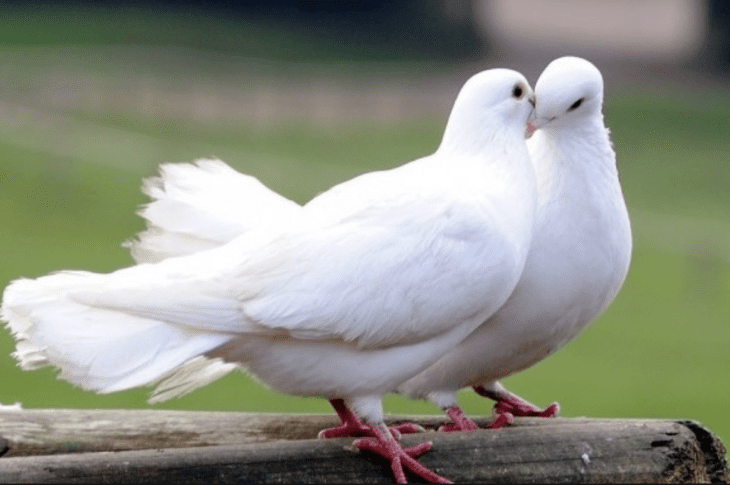
by Pigeon Patrol | Nov 4, 2020 | Columbidae, Doves
What Do Doves Eat
Pigeons and doves eat a variety of grains, seeds, greens, berries, fruits, and will occasionally eat insects, snails and earthworms in the wild.
General Information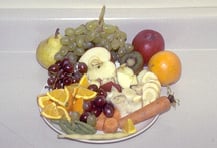
Our knowledge of bird nutrition is constantly evolving. This is due both to heightened awareness of the importance of nutrition and to increased research into birds different needs. As with all other animals, birds need a proper balance of carbohydrates, proteins, fat, vitamins, minerals and water. Different species of birds often require different foods.
Should I be concerned about what my doves eat?
Nutrition is commonly neglected with pet birds. You should discuss the nutrition of your pet pigeon or dove with your veterinarian! Too often owners assume they are feeding a proper diet to their pigeon or dove when in fact they are not! This is a common reason for many health problems. It is important to continually strive to improve your bird’s diet. This involves constantly educating yourself and a certain degree of common sense. It is not sufficient to feed a pigeon or dove just to maintain life; instead, your goal should be to help it thrive and flourish. Your bird’s health depends on how well it is fed.
What does my dove naturally eat?
Pigeons and doves eat a variety of grains, seeds, greens, berries, fruits, and will occasionally eat insects, snails and earthworms in the wild.
What should I feed them?
- A well balanced diet must be maintained at all times. Consult your veterinarian if encountering any problems with diet or the health of the bird.
Seeds
Formulated pigeon seed diets are available. A commercial diet contains mixed seeds and grains, vegetables and some are enriched with brewer’s yeast plus vitamins and minerals. Different diet formulations exist for performance birds, resting birds and breeding birds.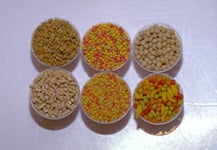
Pigeons are susceptible to calcium deficiency from eating only seeds. Seeds should only be 50% of a balanced diet, never the entire diet.
“Different diet formulations exist for performance birds, resting birds and breeding birds.”
Pelleted Diets
“Pellets should ideally represent approximately 50% of a pigeon’s diet.”
Pellets have been developed to meet all your bird’s nutritional needs. Hand raised babies are the easiest to start on a pelleted diet. Pellets are the ideal diet, therefore you are encouraged to slowly wean seed eating birds onto a pelleted diet. Pellets should ideally represent approximately 50% of a pigeon’s diet. There are many good brands of pelleted foods in the market place.
Fruits and Vegetables
Finely chopped vegetables and greens plus some fruit should be offered as part of the daily diet. Pale vegetables, with a high water composition (i.e. iceberg or head lettuce, celery) offer very little nutritional value. Avocado is reported to be potentially toxic.
Fruits and vegetables must be washed thoroughly to remove chemicals. Cut them into manageable pieces depending on the size of the bird. It is not necessary to take the skin off. Offer fruits and vegetables in a separate dish. If your bird appears to develop a particular fancy for one food item, reduce its volume or stop feeding it temporarily to promote the eating of other foods.
Treat your bird like a small child; offer a small piece of a variety of food items daily and never stop trying. A well balanced diet must be maintained at all times.
Water
Fresh clean water must be available at all times. Depending on the quality of your tap water, you might consider the use of bottled water. Dishes must be cleaned thoroughly every day with soap and water.
Will my bird have any different needs throughout its life?
Birds that are extremely young, stressed, injured, laying eggs or raising young may have certain special requirements. There are specially formulated pelleted foods available for birds with specific nutritional requirements. Consult your veterinarian regarding these situations.
Does my pigeon or dove need extra vitamins, minerals or amino acids?
Your veterinarian can help you assess your bird’s diet and its particular needs. One expert suggests that a pigeon eating 50% of its diet in the form of pelleted food may not need supplements. Specific vitamins or minerals may be more important at various times during a pigeon or dove’s life (e.g., calcium supplements during egg laying)). Calcium supplements are available if your pigeon is determined to be deficient.
“Mix these products in water or preferably apply directly onto moist food.”
Powdered supplements, such as Nekton® (by Nekton-Produkte), Quiko® or Prime® (by Hagen), are often regarded as more stable. Mix these products in water or preferably apply directly onto moist food. Placing these powders on seeds or dried foods is of little value since it will ultimately end up on the bottom of the food dish and not in the bird.
Does my Dove need gravel or grit?
Controversy exists over the need for gravel. It was believed that grit was necessary for the mechanical breakdown of food in the gizzard as an aid to digestion. Birds seem to do fine without grit. Most pigeons are offered a small amount of grit, crushed eggshell or oyster shell. Some birds will in fact have problems if grit is over eaten.
 What pointers should I remember about feeding my Dove?
What pointers should I remember about feeding my Dove?
- Always monitor the amount of food eaten every day by each bird.
- Offer fresh water every day.
- Offer a variety of fresh foods every day.
- Offer fresh fruits and vegetables every day
- Clean all food and water dishes daily.
- No to a food item one day does not mean no forever – KEEP TRYING!
Other Items Your Doves Should Eat:
- Fruits like Apples, Bananas, Pears, Cherries, Peaches, Blueberries
- Vegetables like Bok Choy, Peppers, Lettuce, Cabbage, Carrots, Brussel Sprouts, Potato
Source
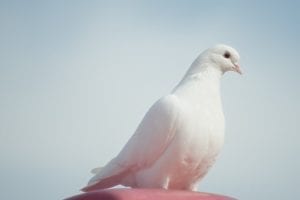
About Pigeon Patrol:
Pigeon Patrol Products & Services is the leading manufacturer and distributor of bird deterrent (control) products in Canada. Pigeon Patrol products have solved pest bird problems in industrial, commercial, and residential settings since 2000, by using safe and humane bird deterrents with only bird and animal friendly solutions. At Pigeon Patrol, we manufacture and offer a variety of bird deterrents, ranging from Ultra-flex Bird Spikes with UV protection, Bird Netting, 4-S Gel and the best Ultrasonic and audible sound devices on the market today.
Contact us at 1- 877– 4– NO-BIRD, (604) 585-9279 or visit our website at www.pigeonpatrol.ca
Bird Gone, Pigeon Gone, Seagull Gone, Pigeon problems, 1-877-4NO-BIRD, 4-S Gel, Bird Control, Pigeon Control, bird repellent,, sonic bird repellent, stainless steel , bird spikes Vancouver, Ultra Sonic Bird Control, Bird Netting, Canada bird deterrents, Pigeon Pests, B Gone Pigeon, Pigeon Patrol, pest controller, pest control operator, pest control technician, Pigeon Control Products, humane pigeon, pigeon deterrents, pigeon traps, Pigeon repellents, Sound & Laser Deterrents, wildlife control, raccoon, skunk, squirrel deterrent, De-Fence Spikes, Dragons Den, Canada bird spikes, Canada pigeon, pigeon control, pigeon patrol, pigeon. Kill pigeons, crow, starling, Pigeon Habitat, Pigeon identifications,
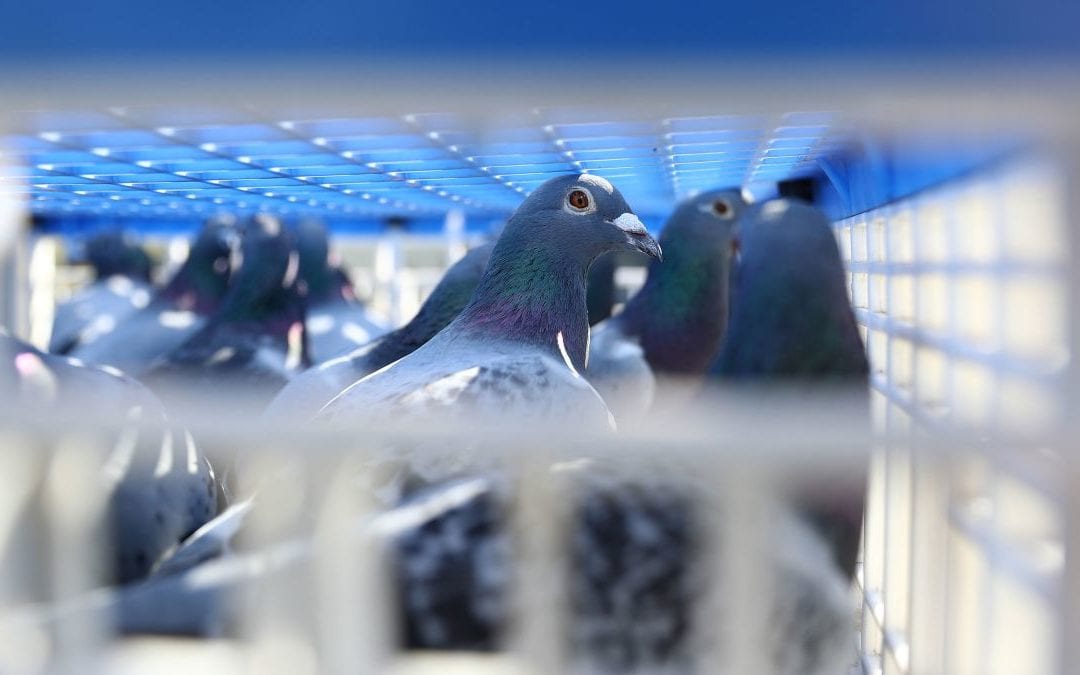
by Pigeon Patrol | Nov 2, 2020 | Animal Deterrent Products, Bird Deterrent Products, history of pigeons, Pigeon Control, Pigeon Patrol's Services
Feral pigeons are the number one urban pest bird, creating a mess and causing damage where they roost, creating a need for pigeon control. Pigeons are descendants of domesticated European homing pigeons, so they have a varied diet and feel at ease making their homes in man-made structures, here is some of the pigeon identifications.
Generally blue-grey in color, with iridescent feathers on the head and neck, problem pigeons often have markings in black, white or brown on the wings and neck. A short neck and small head characterize the standard pigeon; their short legs, hind toes and level front allow for both easy perching on pipes and ledges or walking on flat surfaces. Pigeons generally nest in small, flat areas away from the ground such as building ledges, air conditioning units or window sills. Occasionally pigeons may even lay eggs directly on a protected ledge.
Damage Caused by Pigeon Problems
Pigeon control is important due to the damage and disease problems these problem birds often create. The uric acid in pigeon feces is highly corrosive and can cause extensive damage to metals and other substrates it sits on for long periods. Debris from flocks of problem pigeons often build up, backing up gutters and drains which can cause flooding and roof damage.
Nesting materials and other debris has caused failures in machinery, especially rooftop air conditioning units which are a prime nesting spot for pigeons. Other frequent pigeon problems include slip and fall liability from feces or debris, plus an unclean, dirty company image. The bacteria, fungal agents and ectoparasites found in pigeon droppings are responsible for a host of serious diseases, including histoplasmosis, encephalitis, salmonella, meningitis, toxoplasmosis and more. Many companies also retain significant clean up costs due to the pigeon problems they don’t resolve.
Source
About Pigeon Patrol:
Pigeon Patrol Products & Services is the leading manufacturer and distributor of bird deterrent (control) products in Canada. Pigeon Patrol products have solved pest bird problems in industrial, commercial, and residential settings since 2000, by using safe and humane bird deterrents with only bird and animal friendly solutions. At Pigeon Patrol, we manufacture and offer a variety of bird deterrents, ranging from Ultra-flex Bird Spikes with UV protection, Bird Netting, 4-S Gel and the best Ultrasonic and audible sound devices on the market today.
Contact us at 1- 877– 4– NO-BIRD, (604) 585-9279 or visit our website at www.pigeonpatrol.ca
Bird Gone, Pigeon Gone, Seagull Gone, Pigeon problems, pigeon spikes, 1-877-4NO-BIRD, 4-S Gel, Bird Control, Pigeon Control, bird repellent, Bird Spikes, sonic bird repellent, stainless steel bird spikes, bird spikes Vancouver, Ultra Sonic Bird Control, Bird Netting, Plastic Bird Spikes, Canada bird spike deterrents, Pigeon Pests, B Gone Pigeon, Pigeon Patrol, pest controller, pest control operator, pest control technician, Pigeon Control Products, humane pigeon spikes, pigeon deterrents, pigeon traps, Pigeon repellents, Sound & Laser Deterrents, wildlife control, raccoon, skunk, squirrel deterrent, De-Fence Spikes, Dragons Den, Canada bird spikes, Canada pigeon, pigeon control, pidgon patrol, pidgon. Kill pigeons, crow, starling, Pigeon Habitat, pigeon identifications





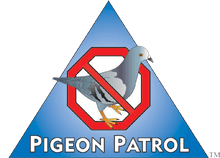

 Pigeons (Rock Doves) in
Pigeons (Rock Doves) in Peregrine Falcon
Peregrine Falcon
 Rifle Used for Pigeon Culling
Rifle Used for Pigeon Culling










 What pointers should I remember about feeding my Dove?
What pointers should I remember about feeding my Dove?
